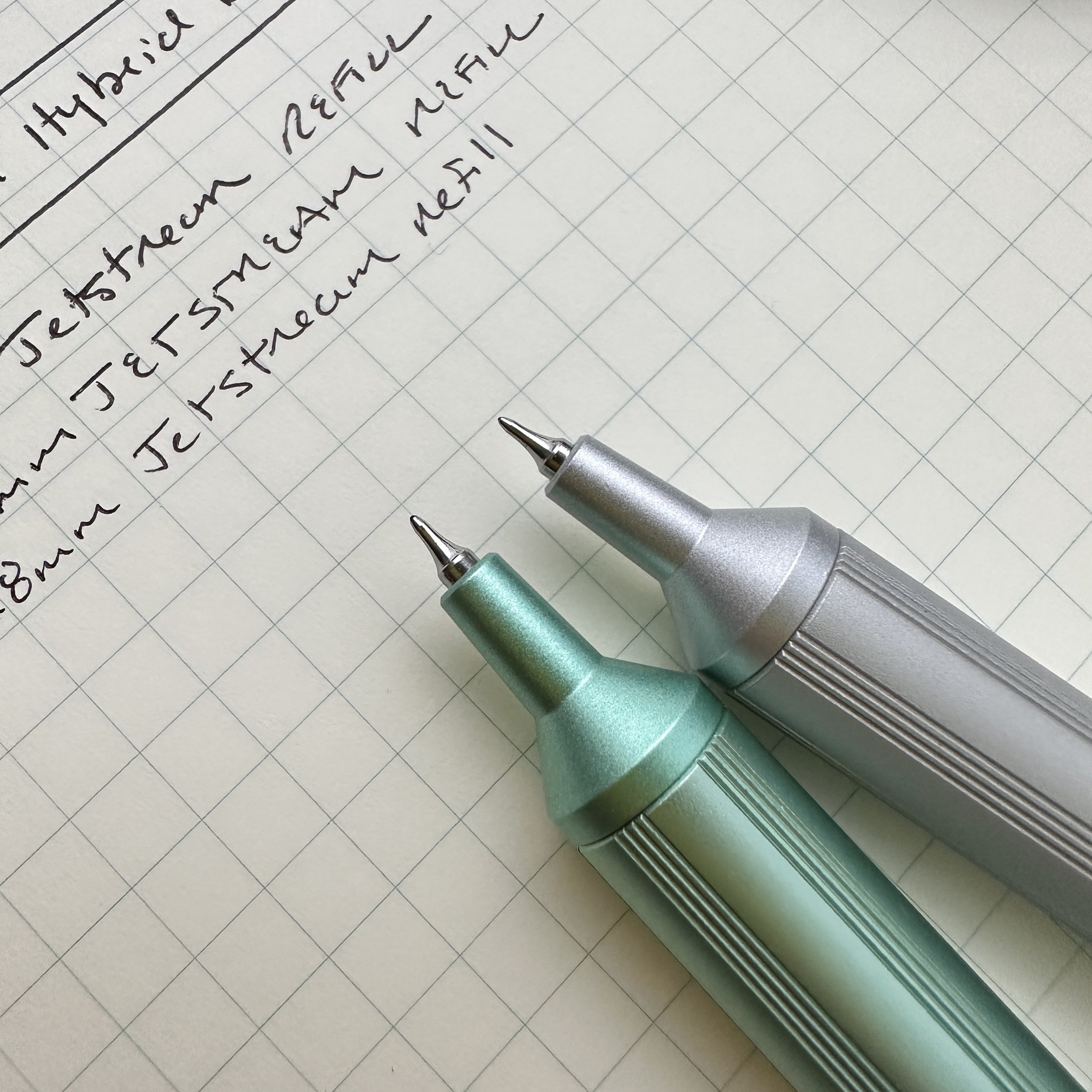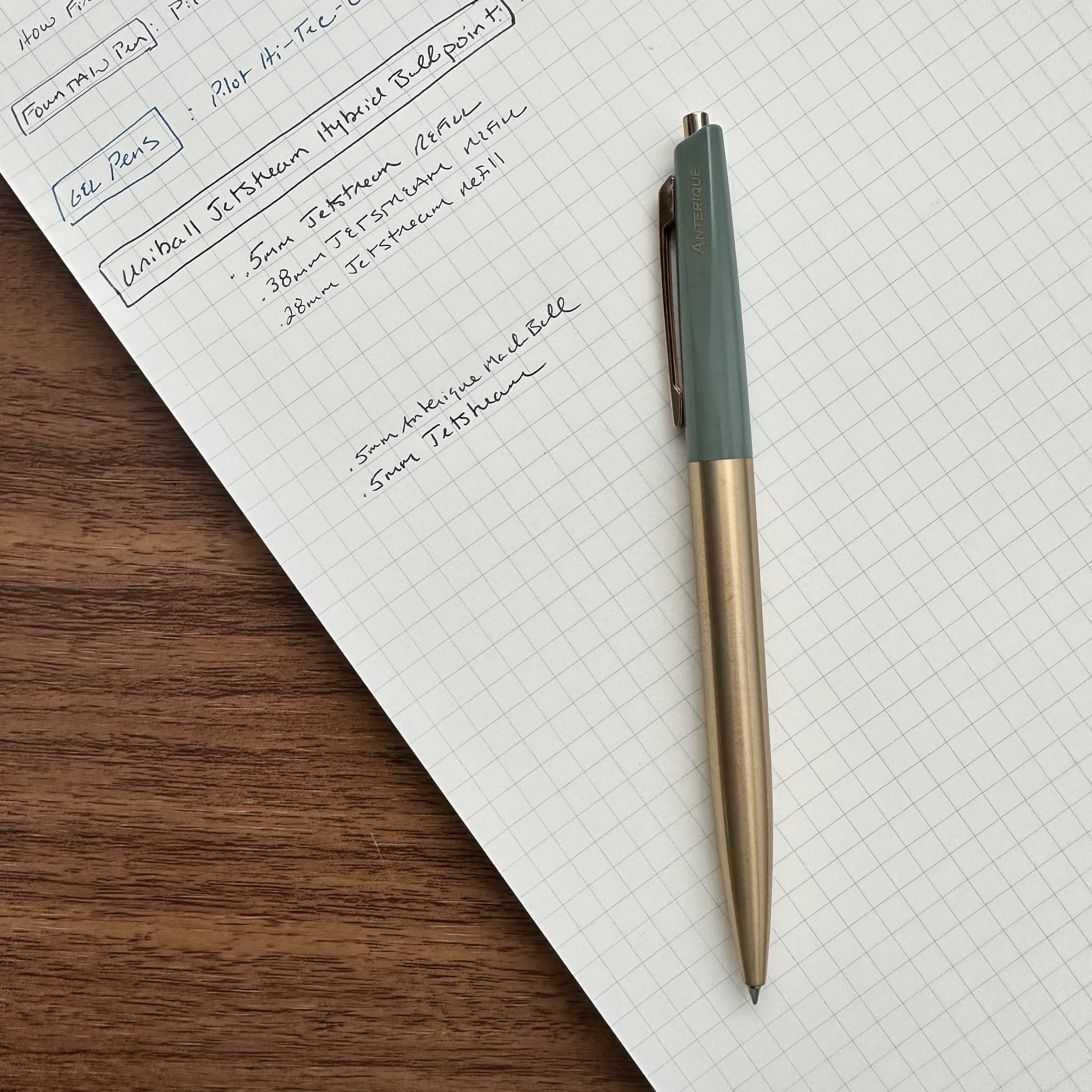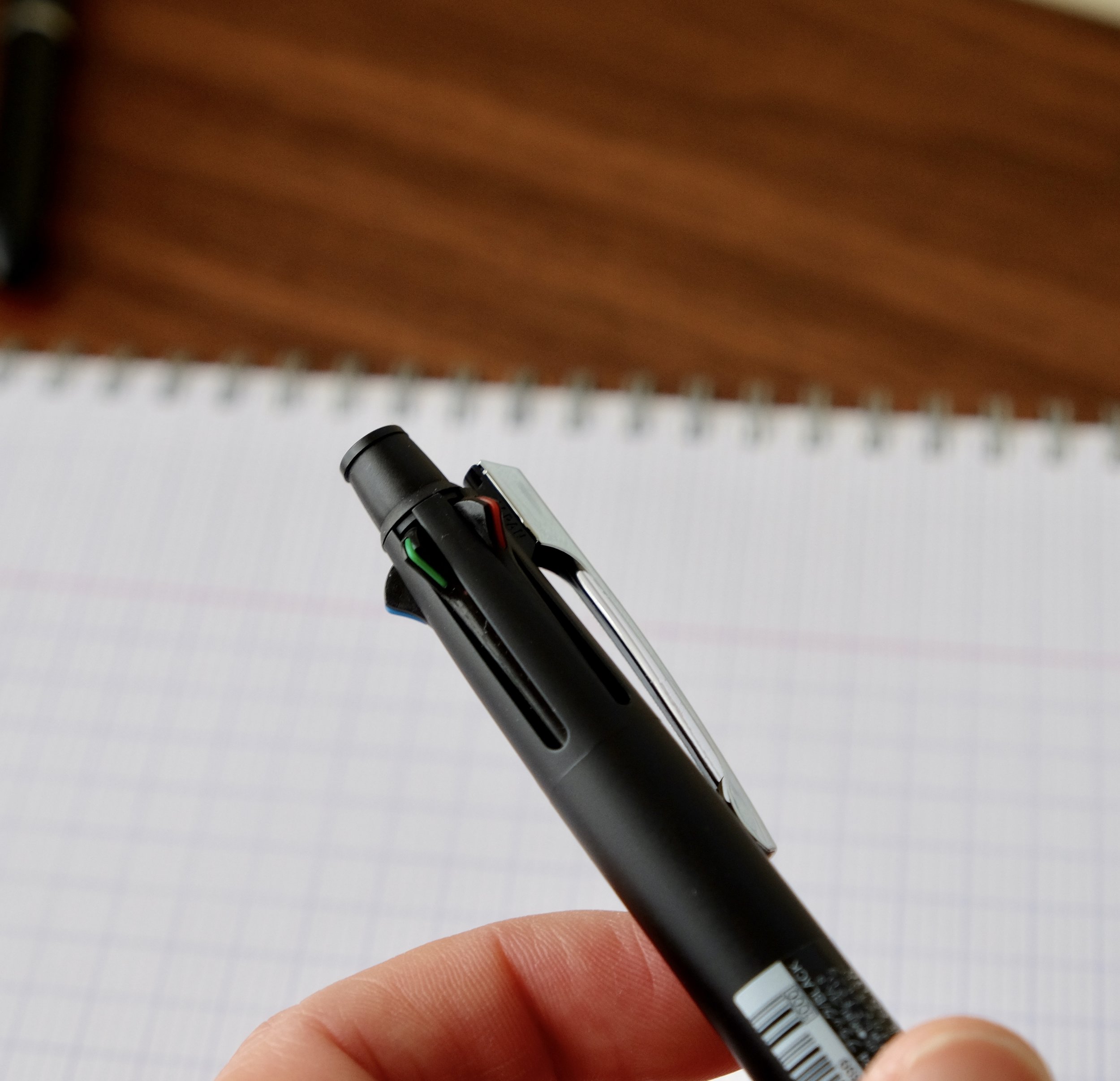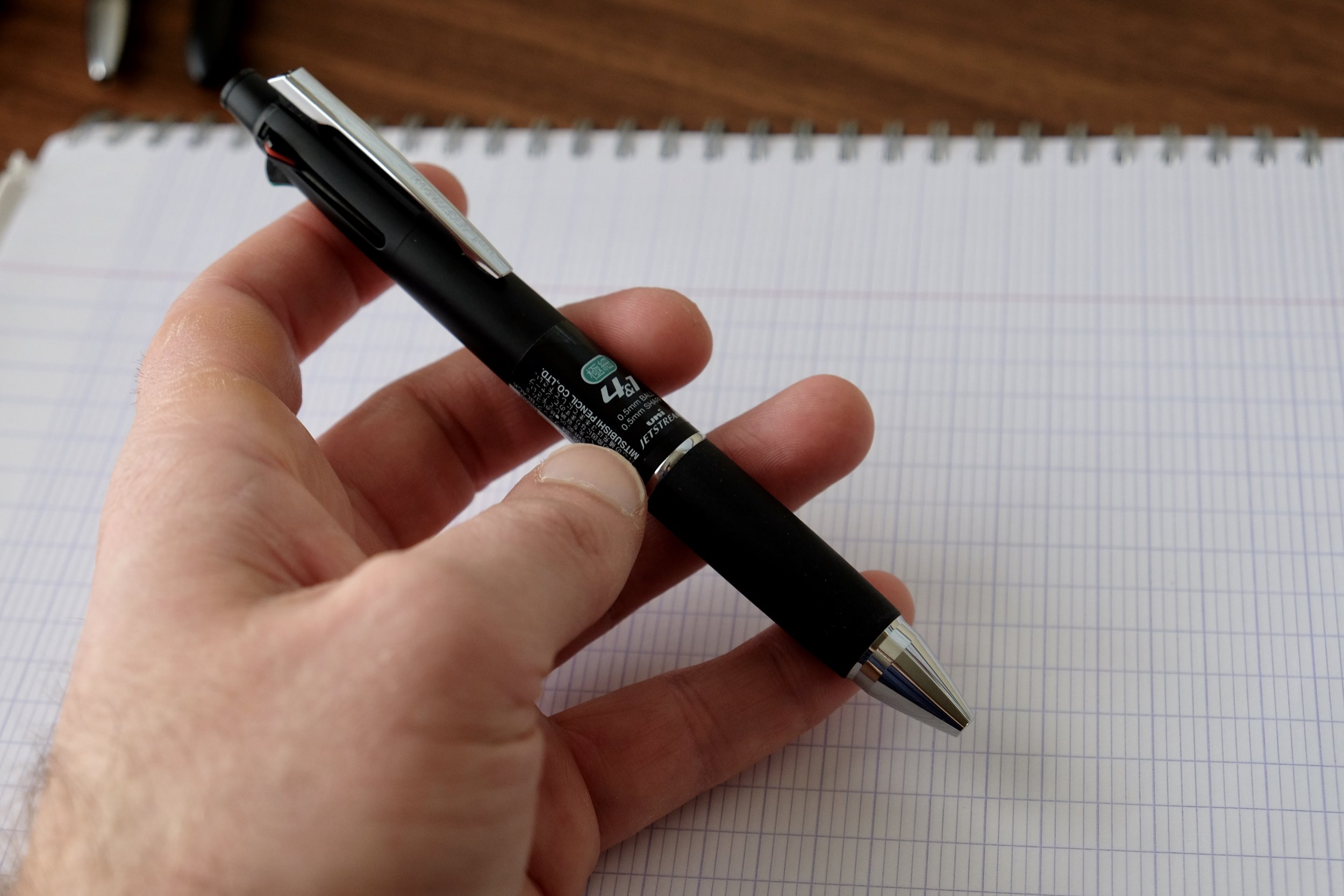It’s been interesting to see pen manufacturers - especially the Japanese manufacturers - move away from standard ballpoints to low viscosity refills. You sometimes hear these refills referred to as “hybrid gel-ballpoint”, because they combine the permanence and quick dry times of a classic ballpoint pen with the smoothness of a gel pen. Personally, I love them, and they form a core part of my own everyday writing rotation. The downside is that outside the Jetstream line, you don’t have many color options, with most companies offering these refills only in black.
In order of darkness, I would rank the inks as follows: Pilot Acro Ink, Uni Jetstream, Anterique Mach Ball, and Ohto. In order of dry time, I would rank them the exact inverse: Ohto, Anterique Mach Ball, Uni Jetstream, and Pilot Acro Ink. That’s not to say that any of them “dry slowly,” but with a darker like, you will get more smoothness, and with that added smoothness comes increased dry time because it means more ink is on the page.
With so many of these sorts of pens entering the market, I thought it might be helpful to do a quick comparison of my thoughts on four of the most common brands: Pilot (Acro-Ink / Acroball), Uni (Jetstream), Ohto (various needle-tip refills), and Anterique (“Mach-ball”). See below for my thoughts on each. Please note that this post is not intended to be comprehensive, but rather an overview of the more popular refills that I often get asked about, with a focus on how they compare to one another. For a more general overview of low-viscosity ballpoints, including other brands, see this post here.
Uni Jetstream. Probably the easiest to find of all the refills featured in this post, the Jetstream comes in anything from D1 size to Uni’s own proprietary multi-pen size to a standard Parker-style cartridge. The biggest selling point of the Jetstream is the number of options you have. D1 and multi pen refills come in colors that include black, blue, red, and green, and even though the Parker-style cartridges are available only in black, you still have .38mm, .5mm, and .7mm tip sizes. Jetstreams are smooth writers - maybe not quite as smooth as Pilot’s Acro-ink, but you’d have to be a pretty big ballpoint aficionado to notice the difference.
Pilot Acro-Ink. In my opinion, the smoothest, easiest-writing refill on this list. While Pilot’s Acro-Ink refills aren’t quite as ubiquitous as the Jetstream line, I like them for longer-form writing. The .7mm writes a smooth line without smearing, and in my opinion it’s a better .7mm tip size than the Jetstream. These refills are found in the Pilot S20 ballpoints, the “Dr. Grip” line, and the Pilot “Acroball” pens that you can sometimes find in larger office supply stores.
Anterique “Mach Ball” Refill. Anterique is known for taking the classic vintage-style click pen and upgrading it with their excellent refill. It only comes in one tip size (.5mm), with black ink, but it’s a great pen and relatively inexpensive. Pro tip: you can often substitute one of these refills into a standard vintage Bic Clic ballpoint. I have a large collection of vintage ballpoint pens, and it’s been a joy to give many of them a fresh life with a new refill. Sometimes you have to trim or extend the Anterique refill, as I don’t think the specs on the Clic were consistent over the years, but there are only a couple of exceptions where I was unable to make it work. Anterique’s biggest selling point is that it dries nearly instantaneously.
Ohto Needle-Tip Ballpoint Refill. The ultra-precise .5mm needle-tip ballpoint has become Ohto’s hallmark. Of all the pens on this page, Ohto’s are on the drier side, but what this means is that you will get a very precise line and zero smearing. Ohto makes the refill for Object Index, Traveler’s Company, and Mark’style branded pens. Honestly, if you see any Japanese needle-tip ballpoint pen, chances are it’s an Ohto.
Writing sample pens are, from left, the Pilot S20 (shown here in brown), the Anterique Mach Ball Standard Size, the Object Index Cedar Pen, and the Uni Jetstream 4+1 Bamboo.
I’m a huge fan of ballpoints and they play a huge role in my everyday working life because, well, they just work. We stock a wide variety in our shop, and if you come visit us in person, ask to try each of the refills featured here, as we have testers generally available.
Thank you for reading! The Gentleman Stationer is supported by the T.G.S. Curated Shop and the T.G.S. Patreon Program. If you’d like to visit our in-person location, you can view directions and up-to-date hours here.




